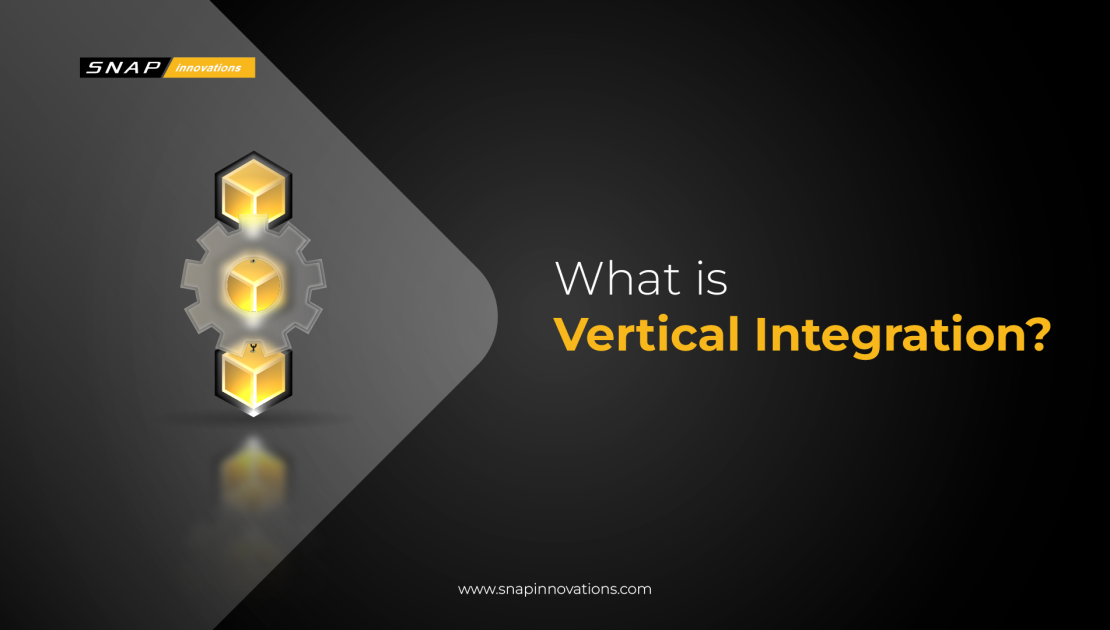In today’s dynamic business landscape, the pursuit of competitive advantage is an ongoing endeavor. Companies must continually adapt and innovate to stay relevant and thrive in their respective industries. One strategy that has stood the test of time and continues to play a pivotal role in achieving this competitive edge is vertical integration. In this article, we will delve deep into the concept of vertical integration, exploring its various forms, the benefits it offers, and how it continues to add value to businesses in the modern era.
Vertical integration is a strategic approach that involves expanding a company’s presence in the supply chain by acquiring or merging with other businesses at different stages of production or distribution. It’s about bringing disparate pieces of the puzzle together under one corporate umbrella, with the ultimate goal of gaining better control, reducing costs, enhancing efficiency, and, ultimately, outperforming competitors.
This article will shed light on the nuances of vertical integration, including its types, advantages, success stories, and the challenges it presents in today’s fast-paced business world. So, let’s dive in and explore how vertical integration continues to shape the success of businesses worldwide.
What is Vertical Integration?
Vertical integration is a strategic approach that plays a crucial role in reshaping how businesses operate within their respective industries. It involves a company expanding its presence in the supply chain by acquiring or merging with other businesses operating at different stages of the production or distribution process.
Essentially, vertical integration seeks to unify various functions that were once managed by separate entities under one corporate umbrella. This strategic move is driven by a combination of factors, including the desire to exert better control over key aspects of the business, reduce operational costs, enhance operational efficiency, and ultimately gain a competitive edge in the market.
Read More: 7 Types of Option Strategies Beginners Should Know
In its essence, vertical integration can be categorized into two primary types: backward integration and forward integration. Backward integration occurs when a company decides to take control of its suppliers or manufacturing facilities.
For example, an automobile manufacturer might choose to acquire the steel mills responsible for producing the raw materials needed for their vehicles. This form of integration empowers the company to secure a consistent supply of high-quality materials and exert greater control over the manufacturing process, ensuring the products meet their standards.
On the other hand, forward integration comes into play when a company decides to acquire distribution channels or retail outlets. For instance, a technology company may open its chain of retail stores to directly connect with consumers. This approach ensures that the company’s products reach end-users efficiently, allowing for a more seamless and controlled customer experience. The choice between backward and forward integration often depends on the specific industry dynamics and the unique goals and strategies of the business in question.
Benefits of Vertical Integration
 Streamlined Operations
Streamlined Operations
One of the most significant advantages of vertical integration is the streamlining of operations. When a company integrates all key processes under one roof, it creates a unified and efficient workflow that can span from acquiring raw materials to delivering the final product to the customer.
This seamless integration reduces lead times, as there are no delays in communication or coordination between separate entities in the supply chain. Moreover, it fosters faster decision-making since decisions can be made promptly within the integrated organization. This operational efficiency not only enhances productivity but also improves overall business agility, enabling a company to respond quickly to market changes and customer demands.
Cost Savings
Vertical integration often results in cost savings through various mechanisms. Firstly, it eliminates the need to pay external suppliers or distributors, reducing the overall cost structure of the company. Instead of purchasing goods or services at market prices, an integrated company can produce or handle them internally at potentially lower costs. Secondly, vertical integration allows for economies of scale.
When a company controls multiple stages of the supply chain, it can optimize production and distribution processes, achieving greater efficiency and reducing unit costs. Lastly, integration reduces the risk of supply disruptions. External suppliers or distributors can be susceptible to various issues, such as strikes, logistical challenges, or quality control problems. By bringing these processes in-house, a company can mitigate these risks, ensuring a more reliable and consistent supply chain, which can save substantial costs in the long run.
Quality Control
Maintaining control over every step of the production process is a fundamental advantage of vertical integration. With this level of control, a company can implement rigorous quality control measures at each stage, ensuring that products consistently meet the highest standards. This commitment to quality control not only enhances product quality but also contributes to increased customer satisfaction. When customers receive products that consistently meet or exceed their expectations, it builds trust and loyalty.
Furthermore, vertical integration reduces the likelihood of recalls or defects in the supply chain. The company can closely monitor production processes, raw material sourcing, and distribution, minimizing the chances of issues that could harm the reputation of the business and incur substantial costs associated with recalls, warranties, or customer dissatisfaction.
Competitive Advantage
In today’s fiercely competitive market, gaining a competitive advantage is paramount for business success. Vertical integration provides companies with a strategic edge by allowing them to differentiate themselves from competitors. By controlling various stages of the supply chain, companies can offer unique products or services that are challenging for competitors to replicate.
This differentiation can be a powerful selling point and a source of competitive strength. Moreover, vertical integration enhances flexibility in responding to market changes and customer demands. Companies can quickly adapt to shifts in consumer preferences, market trends, or unforeseen challenges by adjusting their internal processes and strategies. This agility in decision-making and adaptability to changing circumstances can be a decisive factor in outperforming competitors and maintaining a strong market position.
Types of Vertical Integration
 Backward Integration
Backward Integration
Backward integration is a strategic move where a company takes control of its suppliers or manufacturing processes. In essence, it involves moving up the supply chain to ensure a reliable and cost-effective source of raw materials or components. For example, an automobile manufacturer might decide to acquire a steel mill or invest in mining operations to secure a steady supply of high-quality steel at a competitive price.
By doing so, the company not only reduces its dependency on external suppliers but also gains greater control over the quality and cost of crucial inputs. This type of integration is particularly advantageous when a company aims to safeguard its production processes from disruptions caused by external suppliers or when it seeks to maintain consistent product quality to meet customer expectations.
Forward Integration
On the other hand, forward integration takes a different approach by focusing on the downstream aspects of the supply chain. This strategy involves a company’s expansion into distribution channels or retail outlets to ensure that its products reach the end-consumer efficiently and effectively. For instance, a smartphone manufacturer may decide to open its own chain of retail stores or partner with existing retailers to showcase and sell its products directly to consumers.
By doing so, the company can exert greater control over the marketing, pricing, and presentation of its products, as well as enhance the overall customer experience. Forward integration is particularly useful when a company seeks to establish a more direct connection with its target audience, reduce reliance on third-party distributors, and differentiate its products in the marketplace through unique branding and customer interaction.
Full Integration
Some companies opt for the most comprehensive approach to vertical integration, known as full integration. In full integration, a company seeks to control both upstream and downstream processes in the supply chain. This means that the company not only manufactures its products but also operates its own distribution and retail channels, while simultaneously controlling its sources of raw materials.
This approach offers the highest level of control over the entire supply chain, allowing the company to dictate every aspect of production, distribution, and customer engagement. However, full integration can be the most complex to manage, as it requires substantial investments in various business functions and entails a significant operational and logistical workload. Companies that pursue full integration typically do so when they have a clear strategic vision and the resources to manage the entire supply chain efficiently. An example of full integration can be a company in the fashion industry that not only designs and manufactures its clothing but also owns its retail stores and controls its textile production facilities.
Vertical Integration in Today’s Business Landscape
 Tech Giants and Vertical Integration
Tech Giants and Vertical Integration
In recent years, technology behemoths like Amazon and Apple have showcased the immense potential of vertical integration in reshaping their industries and redefining customer experiences. Amazon, the e-commerce giant, stands out as a prime example of the power of vertical integration. The company has strategically built its own fulfillment centers, developed its delivery fleet, and ventured into streaming services like Amazon Prime Video.
By doing so, Amazon has created a seamless shopping ecosystem where customers can not only find a vast array of products but also have them delivered quickly and enjoy entertainment content through a single platform. This integration not only enhances customer convenience but also bolsters Amazon’s control over the supply chain, reducing reliance on external partners and enabling rapid adaptation to changing market dynamics.
Similarly, Apple, a global leader in consumer electronics, has pursued vertical integration to ensure the quality and cohesiveness of its products and services. Apple controls every aspect of its ecosystem, from hardware production, including designing its own custom silicon chips, to software development and retail operations.
This comprehensive approach guarantees a consistent and user-friendly experience across all Apple devices, enticing customer loyalty and creating a robust brand identity. Apple’s ability to fine-tune its products and services from end to end exemplifies the synergy that can be achieved through vertical integration, strengthening its competitive position in the market.
The Impact on Small and Medium Enterprises (SMEs)
Vertical integration is not solely the domain of tech giants. Many Small and Medium Enterprises (SMEs) have recognized the benefits of this strategy and are adopting it to remain competitive in their respective markets. By integrating various facets of their supply chains, SMEs can offer better prices, maintain higher quality standards, and build stronger relationships with customers.
Read Next: What are Candlestick Patterns? A Trader’s Guide
For instance, a local organic food producer might choose to integrate backward by acquiring farms or suppliers of organic ingredients. This allows the company to control the sourcing and quality of its raw materials, ensuring that its products meet the expectations of health-conscious consumers. In turn, this strategy attracts a more loyal customer base who appreciate the company’s commitment to quality and sustainability.
Challenges and Risks
While vertical integration offers numerous advantages, it is essential to acknowledge the challenges and risks that companies may encounter. One of the primary considerations is the substantial investments required for integration. Expanding into different stages of the supply chain can entail significant capital outlays, which may strain a company’s resources if not managed wisely.
Additionally, there is the potential for overextension, where a company’s focus on integration detracts from its core competencies or leads to inefficiencies within the organization.
Furthermore, companies engaging in vertical integration should be aware of antitrust scrutiny. As a company extends its reach across multiple facets of an industry, it can become more dominant, potentially raising concerns about monopolistic practices. To navigate these challenges and mitigate risks effectively, companies must engage in careful planning, robust risk assessment, and continuous monitoring of their integrated operations, ensuring that they strike the right balance between control and efficiency in the pursuit of vertical integration.
Conclusion
In today’s fast-paced business environment, vertical integration remains a valuable strategy for companies looking to optimize their operations, reduce costs, and gain a competitive edge. Whether through backward or forward integration, or a combination of both, businesses can reap the benefits of better control, improved efficiency, and increased profitability.
While challenges and risks exist, success stories like Tesla, Disney, and McDonald’s illustrate that vertical integration continues to be a powerful tool in the arsenal of businesses aiming to thrive in the modern world. As industries continue to evolve, we can expect to see more companies explore and embrace this strategic approach to stay ahead in the game.

